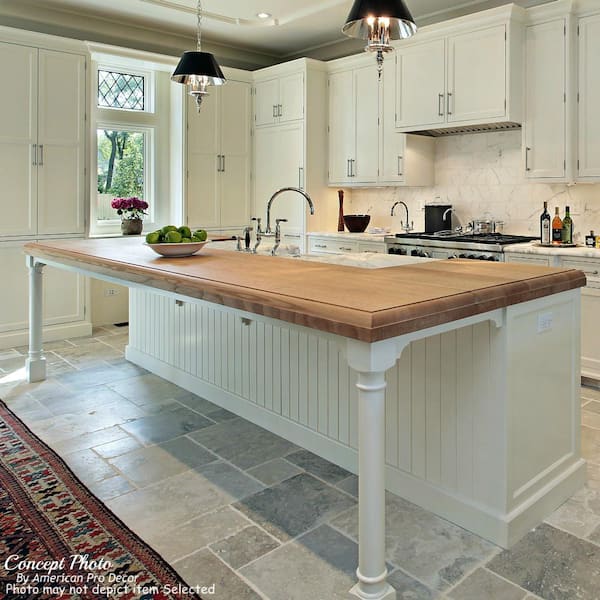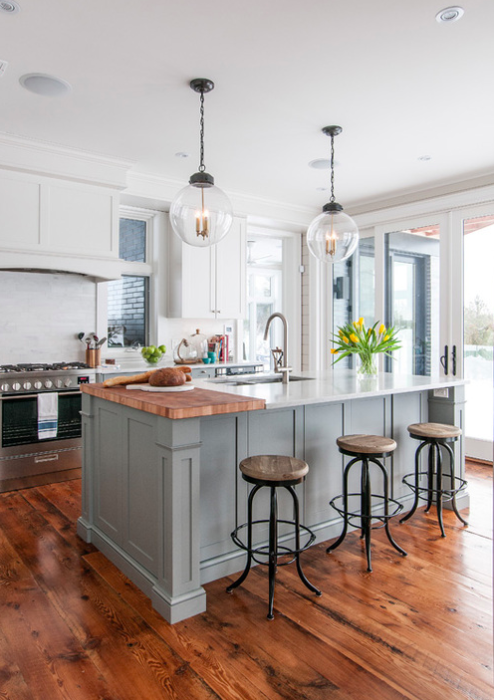Exploring the Crucial Features of a Kitchen Island Leg for Your Culinary Area
The kitchen area island works as a main center in any culinary room, and the option of leg design is crucial in enhancing both its capability and visual appeal. Recognizing the necessary features of cooking area island legs-- including product choices, design styles, and security elements-- can considerably impact the total experience within the kitchen area. As we discover these aspects, we will discover how thoughtful modification and accessories can boost your cooking area island from a plain energy to a striking focal point. What particular factors to consider should be prioritized to attain this balance?
Importance of Kitchen Island Legs
Cooking area island legs play a critical role in both the performance and aesthetic appeals of a cooking area space. They not only support the weight of the island however additionally boost the overall design, adding to the kitchen's visual charm. The option of legs can determine the design of the kitchen area, be it modern, conventional, or rustic.
Functionally, durable and effectively designed legs guarantee stability, enabling for the risk-free usage of the island for numerous jobs such as food prep work, eating, or enjoyable. Strong legs protect against tottering and changing, offering a trusted surface area for day-to-day tasks.
In addition, the elevation and positioning of the legs can influence the comfort degree for those seated at the island. A well-considered elevation can suit bar feceses or chairs, promoting a welcoming environment for gatherings.
In addition to these practical factors to consider, cooking area island legs can function as a centerpiece in the room (kitchen island leg). Decorative or distinctly made legs can boost the style aesthetic, making the island a centerpiece. Hence, picking the ideal kitchen area island legs is important for stabilizing form and feature in any type of culinary room
Product Options for Legs
Choosing the suitable product for cooking area island legs substantially impacts both longevity and layout. Common material options include timber, stone, and metal, each offering unique advantages.
Timber is a prominent selection due to its heat and adaptability. It can be conveniently tailored to match different style styles, from rustic to contemporary. Hardwoods like oak and maple provide superb stamina and long life, while softer woods can be more prone to tear and use.
Metal legs are favored for their smooth, modern visual. kitchen island leg. Stainless steel and light weight aluminum are not only robust yet also immune to corrosion and deterioration, making them excellent for kitchen settings. They can create an industrial appearance and are typically readily available in different coatings to complement other kitchen area components
Stone legs, such as granite or marble, add a component of luxury and stability. While larger than various other materials, they provide exceptional durability and can stand up to significant weight. Nonetheless, they may call for additional support to make sure proper balance.
Eventually, the option of product should align with both useful demands and the total style vision of the kitchen room, making certain that the island legs improve both utility and appearances.
Style Styles to Consider
What design styles should be taken into consideration when selecting legs for a kitchen area island? The choice of leg design considerably affects the overall visual of your culinary area. For a contemporary cooking area, sleek and minimalistic leg styles, such as stainless-steel or geometric shapes, can improve the modern charm, providing a clean and minimalist look.
In comparison, typical kitchen areas gain from classic styles such as transformed or sculpted wooden legs, which include heat and character. These choices often feature detailed details that match classic home furnishings. For a rustic ambiance, think about legs made from redeemed wood or wrought iron, which bring a natural, natural top quality to the space.
If you lean towards an industrial motif, durable metal legs with a distressed finish might be perfect, supplying an edgy yet innovative touch. Additionally, farmhouse style kitchen areas can include beefy legs that stimulate a sense of strength and homeliness.

Height and Security Factors
The height and security of a kitchen island are important aspects that straight influence its capability and user experience. A perfect cooking area island leg should offer adequate height to fit a range of tasks, from food preparation to laid-back dining.
Stability is similarly essential, especially as kitchen area islands frequently work as prime focus in culinary atmospheres. A steady leg design minimizes wobbling and shifting, which can bring about crashes or pain during use. Materials such as strong timber, steel, or a combination thereof are typically employed to achieve the necessary sturdiness. The leg's accessory to the island's base must be secure, making certain durability and resilience versus the wear and tear of everyday use.
Customization and Accessories
Personalization options and devices for kitchen area island legs can significantly improve both the aesthetic charm and functionality of the area. Homeowners can pick from a variety of materials, including timber, rock, and metal, permitting seamless combination with existing cooking area design. The selection of finish-- be it a natural tarnish, paint, a knockout post or powder finishing-- more personalizes the appearance, ensuring that the island matches the total design style.
Along with product and finish, house owners might additionally explore the consolidation of devices such as decorative brackets, flexible feet, or integrated shelving. Brackets can use added assistance while contributing to a modern-day or rustic aesthetic. Adjustable feet are especially helpful for irregular flooring, ensuring the island stays steady and level, which is essential for both safety and security and functionality.

Final Thought
In final thought, kitchen area island legs serve a crucial function in offering stability and enhancing the overall aesthetic of the culinary room. Modification alternatives and devices can raise the kitchen area island, making it a distinctive focal point within the home.
The cooking area island offers as a main hub in any kind of cooking area, and the choice of leg design is pivotal in boosting both its capability and aesthetic appeal. Understanding the important features of cooking area island legs-- consisting of material alternatives, layout styles, and stability factors-- can significantly influence the general experience within the kitchen.Kitchen island legs play click for more info a critical duty in both the performance and looks of a kitchen area space.What layout styles should be thought about when choosing legs for a cooking area island?In final thought, kitchen island legs offer a crucial duty in offering security and improving the overall visual of the culinary room.
Comments on “Necessary Tips for Selecting the Perfect Kitchen Island Leg for Your Home”